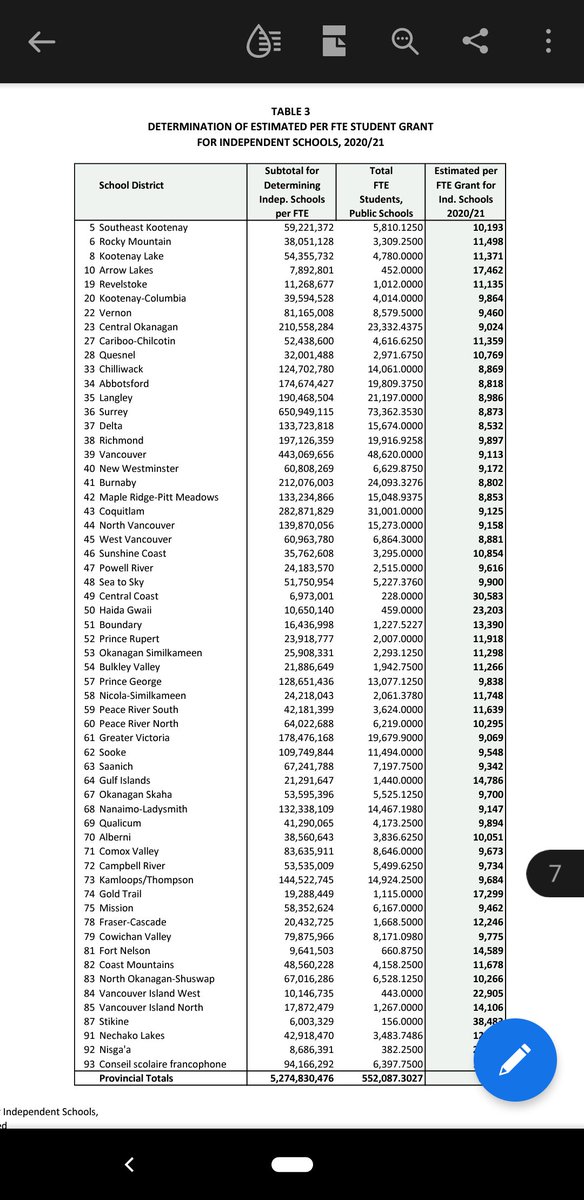Hey #bced with @Rob_Fleming citing class averages as evidence that there isn't as big an issue as teachers say, we need to understand some enrolment management averages and why the stat seems so different than the experience of teachers. /1
@tracysherlock @jodyvance @steeletalk
@tracysherlock @jodyvance @steeletalk
BC definitely has some small classes. This is most often found in small towns. But also specialized programs like those for kids who are at risk of not graduating or who have high needs. /2
But let's think about this in theory. The class size average is meaningless in setting up public policy around distancing. Here's why:
1. I can't move kids from a Surrey high school class of 30 to the school in New Denver that has 9 kids per class.
/3
1. I can't move kids from a Surrey high school class of 30 to the school in New Denver that has 9 kids per class.
/3
I can't cancel a program that has 10 kids in it with complex needs and balance it out with a Kelowna Secondary school Math 10 class.
/4
/4
But not only that, average class sizes work in funny ways.
Here's why:
If there are 10 #bced classes of 10
+ 10 #bced classes of 30
The average class size is 20.
But this is key:
300 families experience full classes.
100 families experience small classes.
/5
Here's why:
If there are 10 #bced classes of 10
+ 10 #bced classes of 30
The average class size is 20.
But this is key:
300 families experience full classes.
100 families experience small classes.
/5
So of course it seems like very few families experience low class size. That's how the magic of averages works. It's why politicians like average class size.
/6
/6
What we care about in #publicpolicy and #publichealth and #education during #COVID19 are questions like 'how many classes will find it difficult to achieve 1m,1.5m, 2m of distance.
/7
/7
So we need a distribution.
Number of classes of 27-30
N classes of 23-26
N classes of 19-22
N classes 15-18
N classes below 15.
You deploy resources to solving the top 2 or 3 groups and ignore the bottom 2. It doesn't really matter what the average is.
/8
Number of classes of 27-30
N classes of 23-26
N classes of 19-22
N classes 15-18
N classes below 15.
You deploy resources to solving the top 2 or 3 groups and ignore the bottom 2. It doesn't really matter what the average is.
/8
We have a system to recognize the funding of small class sizes when we need them in #bced. School districts in rural locations have received more $ per student than urban ones. This acknowledges the geographical reality that kids can't travel unlimited distances for school.
/9
/9
#bced Base funding is about $7600 per student. After that, geography, designated needs, ELL count and other factors add to that. The easiest spot to see this info is actually the grants per student for independent schools as they are set based on their home district grant.
So you can see, a single student in the Stikine District is funded at $38,482.
A student in Delta is funded at $8,532.
Guess which district will be pulling down the average class size?
But the Stikine isn't where #Covid_19 risk is highest in #bced.
A student in Delta is funded at $8,532.
Guess which district will be pulling down the average class size?
But the Stikine isn't where #Covid_19 risk is highest in #bced.
So, what have we learned?
1. #BackToSchool density is not an issue everywhere.
2. More people are in big classes than averages suggest.
3. We already fund small classes for some factors (eg geography).
4. The @bcndp won't allow #Covid_19 to be one of these factors.
/End
1. #BackToSchool density is not an issue everywhere.
2. More people are in big classes than averages suggest.
3. We already fund small classes for some factors (eg geography).
4. The @bcndp won't allow #Covid_19 to be one of these factors.
/End
Correction: I believe more people are in big classes than averages suggest. But @bcndp could clarify this and inform the discussion by publishing the distribution mentioned above, along with the % of students in classes greater than 26 instead of the averages.

 Read on Twitter
Read on Twitter


